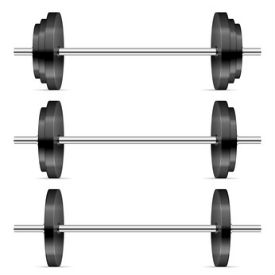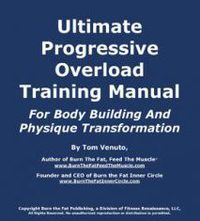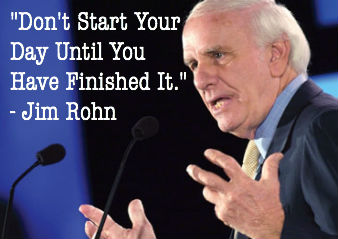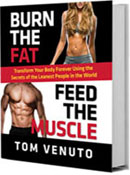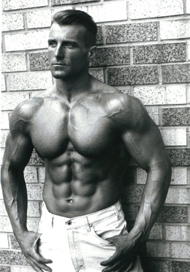Titolo: Clima invernale e perdita di grasso: il freddo fa ingrassare?
Autore: Tom Venuto, CSCS, NSCA-CPT
Traduzione: Piero Maina
URL: www.Burnthefatinnercircle.com
Parole: 23.966
Clima invernale e perdita di grasso: il freddo fa ingrassare?
Di Tom Venuto
BurnTheFat.com – Body Transformation System
Ciao a tutti, oggi pubblico con il suo permesso, un articolo del grande Tom Venuto che ho tradotto in Italiano, cosicchè anche chi non conosce l’inglese, possa godere di queste preziose e interessanti informazioni che proprio in questo periodo invernale e post vacanze di Natale, ci possano tornare utili per recuperare la nostra forma. Buona lettura:
“In inverno quando è più freddo, ingrasso!” Se sentissi qualcuno dire questo, probabilmente rideresti e diresti che sono le solite scuse tipo: “Mi dispiace, ma oggi non posso allenarmi … le tute da allenamento sono da lavare”. Ma la verità è che ci sono conferme scientificamente provate per cui in inverno si tende ad aumentare di peso. Fortunatamente, ci sono anche delle soluzioni, peraltro semplici e di facile applicazione.
Se vivi dove le stagioni cambiano, o anche peggio, dove il clima è freddo e nuvoloso per la maggior parte dell’anno, o se la neve, il ghiaccio e la pioggia gelida interrompono i tuoi programmi di allenamento all’aperto e sei preoccupato per il tuo girovita, allora questa è la domanda e la risposta di Burn The Fat della settimana ed è una lettura obbligata …
DOMANDA: Ehi Tom, ci sono prove che durante la stagione fredda e in inverno diventa più difficile perdere grasso corporeo? A me sembra più facile perdere peso durante la stagione calda. Mi chiedevo se ci fosse una ragione per questo, forse uno desidera maggiormente diversi tipi di cibo? Si perde l’appetito nella calura estiva? O l’appetito aumenta con il freddo? Il metabolismo rallenta in inverno? Se sai darmi delle risposte al riguardo, te ne sarei grato. Grazie!
RISPOSTA: Sì, ci sono molte ragioni per cui molte persone tendono ad ingrassare in inverno. Sono sia fisiche che mentali. Da un punto di vista psicologico, ecco una semplice spiegazione: il mutare delle stagioni può influenzare il tuo umore.Una condizione nota come Disturbo Affettivo Stagionale (DAS) è stata studiata a lungo da psicologi e psichiatri. Spesso è molto più del semplice “Winter Blues” (Depressione Invernale), il DAS si verifica durante le giornate più brevi e le lunghe notti dell’inverno e dell’autunno, quando c’è meno luce solare e le temperature sono più fredde.I sintomi includono depressione, desiderio di cibi specifici, in particolare carboidrati densi di calorie, si sperimenta perdita di energia, senso di disperazione e sonno eccessivo. Ovviamente, tutti questi effetti possono contribuire a far aumentare di peso.
Una ricerca scientifica svizzera intitolata “Abitudini alimentari nel Disturbo Affettivo Stagionale: chi tenderà ad aumentare di peso in inverno?” I ricercatori hanno scoperto che non solo i pazienti con DAS mangiavano più zuccheri e cibi ricchi di amido, ma erano anche più suscettibili al mangiare emotivo, ricercando i dolci, quando emotivamente si sentivano più ansiosi, affamati, stanchi o soli. Uno dei trattamenti standard per il DAS è la terapia della luce intensa. Assicurati di dormire a sufficienza, ma alzati anche alle prime luci dell’alba, perché è importante massimizzare le ore di esposizione alla luce naturale.
Al contrario, un’ altra causa psicologica dove il clima influisce sulla quantità di cibo che ingeriamo è l’attività fisica e la perdita di grasso è maggiore quando il clima è caldo; le persone stanno all’aperto per più tempo vestendosi meno, questo fatto crea più motivazione all’esercizio fisico. Diciamolo pure, le persone vogliono avere un bell’aspetto quando indossano il costume o hanno meno indumenti addosso. In inverno e quando il clima è più freddo, sei coperto, quindi c’è meno presa di coscienza e nessuna responsabilità poiché di solito nessuno ti vede attraverso i vestiti, diverso è quando la gente ti vede con pantaloncini e canotta. Pertanto, la maggior parte delle persone tende a seguire una dieta più diligentemente e ad allenarsi più duramente nei mesi più caldi. (Non è un caso che così tanti bodybuilder mettano su massa nel periodo invernale, viceversa perdano peso durante l’estate).
Naturalmente, abbiamo il problema opposto nel periodo delle festività Natalizie, un periodo che tradizionalmente si sposa con i festeggiamenti, banchetti, bevande e regali (dove a volte anche i regali sono commestibili!) Molte persone si preoccupano maggiormente del loro stato di forma in questo periodo perché pensano che arriveranno ad aumentare di peso fra i 2Kg e 5Kg. La ricerca ha dimostrato che l’aumento di peso stagionale è reale, anche se di solito non è così tanto, in genere solo circa mezzo chilo, un kg al massimo, se si fa la media sui grandi numeri di popolazione. (Solo il 10% circa guadagna 3 kg o più). Il vero problema che la ricerca ha dimostrato a lungo termine è quel lento aumentare di peso anno dopo anno e che spesso passa inosservato e, in un periodo di 10, 15 o 20 anni, è sufficiente a portarci al sovrappeso cronico o all’obesità. Sono tanti gli uomini e le donne che si svegliano una mattina all’età di 40 o 50 anni, e guardandosi allo specchio si chiedono: “come ho fatto a diventare così grasso/a?” (Mezzo kg, o un kg all’anno, dopo ogni stagione invernale, si arriva a questo aumento di peso incontrollato). Lo studio più famoso su questo argomento è stato pubblicato sul prestigioso “New England Journal of Medicine”. Ecco cosa hanno riscontrato gli autori:
In contrasto con la percezione comune che il peso aumenti durante le festività invernali, il peso della stragrande maggioranza dei soggetti in questo studio è cambiato poco durante le festività natalizie. Questi soggetti credevano di aver incrementato di quattro volte il loro effettivo aumento di peso durante le vacanze, che è invece risultato di soli 0,37 kg. Meno del 10% dei soggetti ha guadagnato 2,3 kg o più. Pertanto, nonostante il fatto che l’85% dei soggetti monitorati non facesse alcuno sforzo per controllare il proprio peso, grandi aumenti di peso durante le festività invernali non sono stati la norma.Sfortunatamente, abbiamo anche scoperto che l’aumento di peso durante il periodo autunnale pre-ferie e l’aumento durante le festività natalizie sono stati in gran parte mantenuti durante il periodo invernale post-ferie da gennaio a marzo, con un conseguente aumento medio netto di 0,48 kg. Nei soggetti che hanno completato un anno di osservazione, il peso è aumentato in media di 0,32 kg durante il periodo di vacanza e di 0,62 kg durante l’intero anno, suggerendo che il periodo che contribuisce maggiormente alla variazione di peso annuale è il periodo di sei settimane di vacanza.
La maggior parte di noi mangia e beve di più nel periodo delle festività natalizie. Tuttavia, alcune persone hanno anche chiesto se ci siano altre motivazioni e se le giornate brevi, il clima cupo e le temperature fredde hanno qualcosa a che fare con l’aumento di grasso a livello fisiologico. La domanda è: “Il metabolismo rallenta in inverno, come se stessimo entrando in “modalità letargo?” In realtà, è vero il Contrario. L’esposizione a temperature fredde provoca una risposta di termogenesi da tremito, il che significa che c’è un aumento del metabolismo per produrre più calore. Per creare calore è necessaria energia (calorie bruciate = calore). Infatti, nel corso degli anni, molti guru della perdita di peso hanno promosso l’idea dell’esposizione al freddo per accelerare il metabolismo, suggerendo strani “trucchi” come spegnere il riscaldamento in casa, uscire di casa poco vestiti in inverno, nuotare in laghi gelidi o fare surf tutti i giorni in acque fredde o fare docce fredde che stranamente ancora oggi risultano popolari. Sfortunatamente l’esposizione al freddo, aria fredda o acqua fredda, come tentativo per far bruciare più calorie al nostro corpo non si traduce nel tempo in risultati di perdita di grasso nel mondo reale, anche se risultati a breve termine possono mostrare un elevato consumo di calorie.
Perché non funziona? A parte il fatto che si tratta di una piccola quantità di calorie bruciate in più, non è poi così pratico o piacevole congelarsi il sedere, quindi il tentativo probabilmente non durerebbe a lungo e sarebbe destinato al fallimento se uno ci provasse. Un altro motivo è che il nostro corpo può adattarsi e compensare le perdite di calore. Un esempio interessante dell’impatto che le temperature fredde hanno sul bilancio energetico è il caso del nuoto. Paradossalmente, è stato osservato che molte persone che hanno iniziato a nuotare hanno bruciato tantissime calorie, ma non hanno perso grasso (o hanno persino guadagnato peso). All’inizio alcune persone pensavano che il corpo stesse producendo grasso per ripararsi dal freddo. Sembra plausibile, vero? Ma dopo che alcuni scienziati attenti hanno esaminato la cosa più da vicino, hanno scoperto che il nuoto può essere un eccellente esercizio per bruciare i grassi, ma molte persone non perdono molto grasso col nuoto perché si è scoperto che il nuoto, specialmente in acque fredde, fa si bruciare più calorie, ma fa anche aumentare l’appetito.
Pertanto, potremmo ipotizzare che lo stesso possa accadere con temperature fredde (aria). Se il tuo corpo usa un po’ di energia per tremare o produrre calore, un modo in cui può compensare quella perdita di energia è aumentare l’appetito, quindi è probabile che il bilancio energetico negativo, se presente, sia a breve termine. (Incredibile come il tuo corpo funzioni per controbilanciare le cose, non è vero?)
Alcuni scienziati suggeriscono addirittura che mangiare di più nei freddi mesi invernali sia inserito nel nostro DNA come meccanismo di sopravvivenza. Teorizzano che gli esseri umani hanno una tendenza naturale a mangiare di più in inverno perché storicamente parlando, questo era un periodo in cui c’era carenza di cibo. Sebbene non ci sia praticamente alcuna possibilità di morire di fame nella moderna società industrializzata, potremmo inconsciamente cedere alle direttive evolutive.
Per una serie di possibili ragioni, la maggior parte delle persone tende a mangiare di più in inverno, soprattutto durante le festività natalizie e allo stesso tempo, tende anche a muoversi meno.
Uno studio condotto in Massachusetts e pubblicato sull’European Journal of Clinical Nutrition ha mostrato alcune scoperte interessanti sulle variazioni stagionali dell’assunzione di cibo, dell’attività fisica e del peso corporeo in una popolazione in sovrappeso. I risultati principali includevano:
L’apporto calorico giornaliero era di 86 calorie in più nei mesi freddi rispetto alla primavera
L’attività fisica più bassa è stata in autunno e in inverno
Il peso corporeo ha raggiunto il picco in inverno
Tutti i cambiamenti stagionali sono stati abbastanza piccoli, ma abbastanza significativi da essere misurabili
Durante le vacanze, la maggior parte delle persone che aumenta di peso, dà la colpa al cibo, ma non sono solo le feste del Natale e Capodanno che incidono, è anche una minore attività fisica durante l’intero inverno che contribuisce all’aumento del girovita. Le routine di esercizi all’aperto a volte termina bruscamente e non viene fatto nulla per compensare la cosa. Di solito si usano scuse del tipo: “è colpa del meteo (“Fa troppo freddo” o “Non posso correre / camminare / andare in bicicletta sulla neve e sul ghiaccio!” O “È buio prima che torni a casa dal lavoro”).
Il calo dell’attività fisica non è solo dovuto al minor numero di sessioni di allenamento. Anche la quantità di passi che normalmente si fanno durante il giorno subiscono un calo, soprattutto se non li si monitorano.
La ricerca fatta con l’utilizzo del pedometro pubblicata sulla rivista “Medicine and Science and Sports And Exercise” ha rivelato quanto l’attività fisica diminuisca in inverno rispetto alle altre stagioni.
E’ stato preso in esame un gruppo di donne di mezza età, che sono generalmente meno attive di altri gruppi, per cominciare c’è stato un importante calo dei passi compiuti durante il giorno durante il ciclo stagionale:
7616 passi al giorno in estate
6293 passi al giorno in autunno
5304 passi al giorno in inverno
5850 passi in primavera
Questo è il motivo per cui utilizzare un contapassi tipo il Fitbit o uno smartwatch tutto l’anno è un’ottima idea. Puoi vedere i cambiamenti del numero di passi stagionali e se noti che diminuiscono all’arrivo dell’inverno, puoi apportare le modifiche necessarie più facilmente alla tua attività semplicemente perché sai quello che sta succedendo e diventi responsabile per quello che fai. Inoltre, sebbene 10.000 passi al giorno (o più) possano essere scoraggianti, non è così difficile partire con 2.500 passi al giorno in più, rispetto a quanti ne fai ora. Questo è sufficiente per compensare il calo medio di passi registrato dalla maggior parte delle persone. Migliorando la propria responsabilità dal punto di vista nutrizionale e combinando le due azioni, sinergicamente questo piccolo cambiamento da solo può risolvere il problema dell’aumento di peso invernale.
Come si può vedere è legittimo pensare che è più facile ingrassare durante i mesi più freddi. Se non si fa nulla per impedirlo; ci sono buone probabilità che si possa ingrassare almeno mezzo chilo o forse uno durante il periodo autunnale e in inverno, quando le giornate sono più buie. Proprio perché questa quantità di aumento di peso non è significativa è particolarmente insidiosa perché o te ne accorgi e agisci immediatamente con le dovute misure o potrebbe passare completamente inosservata all’inizio, per poi trovartela “appiccicata” addosso e non “staccarla” più. In 10 anni, ti ritrovi con un aumento di peso/grasso che può andare da 4,5 Kg a 9 Kg. In 20 anni, puoi arrivare a guadagnare da 9 Kg a 18 Kg, senza quasi accorgertene e tutto grazie a un lento accumulo di peso/grasso.
Fortunatamente, l’aumento di peso in inverno non è una condizione scontata, Questa battaglia si può vincere abbastanza facilmente. Puoi rimanere magro tutto l’anno, quello che devi fare è rimanere attivo durante l’inverno, indipendentemente dal tempo atmosferico e rimanere disciplinato con l’alimentazione la maggior parte del tempo.
Ti suggerisco di avvicinarti all’alimentazione e all’allenamento invernale in due fasi. Novembre e dicembre sono mesi perfetti per fissare obiettivi e chiudere bene l’anno. Creare obiettivi per questo periodo, ti manterrà motivato per tutto il tardo autunno e l’inizio dell’inverno. È una strategia perdente aspettare il nuovo anno e non avere nuovi obiettivi su cui lavorare durante le vacanze, procrastinare, non paga.
Per oltre un decennio ho promosso sfide di fitness durante le vacanze natalizie, iniziate prima del giorno del Ringraziamento e proseguite fino alla fine dell’anno. Se mai hai la possibilità di iscriverti, partecipa con tutti i mezzi. Se non riesci a trovare un concorso formale, una sfida, una gara o un qualche tipo di evento di fitness, crea la tua sfida per le vacanze natalizie, e non è mai troppo tardi. Anche se è il giorno di Natale, si possono fissare degli obiettivi per l’ultima settimana dell’anno. Ho amici che tengono viva una tradizione facendo un allenamento epico a Capodanno.
Se possibile, invita gli amici a unirsi a te per aumentare la responsabilità verso gli obiettivi fissati. Se possibile, assumi un coach che ti aiuti a creare il tuo piano e ti renda ancora più responsabile. È incredibile quanto sarai motivato e quanto duramente lavorerai quando dovrai riferire i tuoi progressi ogni settimana a un mentore o ad una figura autorevole che rispetti. Con un obiettivo o una sfida, un allenatore o un sistema di supporto, o entrambi, credimi, le vacanze non ti saranno di ostacolo. Potresti anche arrivare alla migliore forma della tua vita.
La seconda fase inizia a gennaio. Anche se l’esercizio e la dieta “Buoni propositi per il nuovo anno” sono una consuetudine in questo periodo dell’anno e molte persone li fanno con scarsi risultati, non sono contrario a fissare obiettivi il primo dell’anno. Credo che sia un ottimo momento per pensare a cosa vuoi per i 12 mesi a venire. Assicurati che i tuoi obiettivi non si concentrino solo sul peso corporeo o sul grasso corporeo, ma includano anche obiettivi di fitness, salute, forza e prestazioni. Questo ti manterrà molto più motivato se hai una settimana in cui la bilancia non si muoverà.
Un fattore chiave per l’alimentazione durante tutto l’arco dell’anno, ma soprattutto nel periodo vacanziero, è la dieta flessibile. Ciò significa mantenere il tuo piano nutrizionale preciso dall’80% al 90% delle volte, riuscendo a goderti così tutti i tuoi cibi preferiti nel periodo delle vacanze con moderazione. Evita di pensare in modo dicotomico al cibo e di chiamare alcuni cibi buoni e altri cattivi. Non dimenticare mai che tendi a desiderare ciò che non ti è permesso avere. Diete rigide con elenchi di alimenti proibiti si ritorcono contro e, anche se non lo facessero, la restrizione non è un modo per godersi le festività natalizie.
I migliori trucchi per avere successo con il tuo allenamento invernale sono gli stessi che dovresti usare tutto l’anno: fissare continuamente obiettivi di prestazione (avere obiettivi per ogni allenamento), creare un piano con un programma settimanale in cui ti impegni e rimanere responsabile (avere qualcuno nel tuo angolo in modo da poter mostrare a lui/loro i tuoi risultati e i tuoi progressi settimanali comparati con i tuoi obiettivi). Assicurati inoltre che il tuo piano includa un elenco di potenziali ostacoli e come ti comporterai se li incontrerai, comprese le contingenze per tutti i tipi di tempo. Inoltre, considera di provare un allenamento che non hai mai fatto prima. Provare esercizi, tecniche e programmi completamente nuovi può aggiungere quel briciolo di sale in più, una scintilla di motivazione e una ventata di freschezza che ti manterrà più euforico e motivato nelle giornate invernali più cupe.
Ovviamente dipende dalla località in cui vivi e quale meteo incontri, ma è improbabile che tu non possa indossare cappotto, cappello e guanti e andare a fare una passeggiata solo perché è inverno. Tuttavia, se è tempestoso o pericolosamente freddo, o se preferisci, puoi effettuare le tue camminate e la parte cardio del tuo programma al chiuso su una cyclette, un tapis roulant, un vogatore o una macchina ellittica, o ancora, semplicemente con esercizi a corpo libero se non hai a disposizione le macchine o attrezzature cardio. Si, dipende da te, puoi farlo!
Non è necessario nemmeno sfidare gli elementi e avere il coraggio di guidare fino a una palestra per allenarti con i pesi, puoi farlo anche a casa. Una configurazione casalinga semplice come manubri e una panca, oltre a bande elastiche di resistenza e l’allenamento a corpo libero possono farti raggiungere ottimi risultati e portarti lontano. E considera che puoi aggiungere più attrezzi se il tuo spazio e il tuo budget lo consentono.
I mesi invernali sono anche un ottimo periodo per essere avventurosi e provare qualcosa di nuovo all’esterno, vale a dire gli sport invernali. Pensa a inserirli nel tuo piano di allenamento. Lo ammetto, non sono mai stato un fan del freddo, del ghiaccio e della neve. Anche se l’escursionismo e lo zaino in spalla sono i miei hobby preferiti dietro il sollevamento pesi, sono sempre stato un uomo di tre stagioni all’aperto.
Io abito in New Jersey e verso la fine di ottobre, proprio quando le prime gelate stavano arrivando e le foglie stavano cadendo, ho deciso che questo sarebbe stato l’anno in cui finalmente mi sarei rifiutato di restare rinchiuso a casa. Ho deciso di continuare a fare escursioni. Ho anche fissato alcuni obiettivi di corsa, il più possibile sui sentieri. Tutto quello che dovevo fare era investire nella giusta attrezzatura, scarpe e capi caldi e ho continuato a uscire come ho fatto per il resto dell’anno. Non ho mai dovuto utilizzare il tapis roulant. Con mia sorpresa, mi piaceva stare fuori, anche con il freddo e la neve.
A dicembre, dopo il primo grande temporale, ho fatto una cosa che non avrei mai pensato di fare: ho comprato il mio primo paio di scarpe da neve e sono uscito per oltre 5 miglia/8Km la domenica prima di Natale. Quanto bruciavano i quadricipiti ed è stato un serio test cardio. Non ho nemmeno le scarpe da neve tradizionali – ho le scarpe da corsa (da running). Scendere a palla dalle colline innevate è stata la cosa più divertente che io abbia fatto da anni.
Allo stesso tempo, per questi ultimi tre mesi dell’anno, ho deciso di iniziare un nuovo programma di sollevamento pesi con una routine di split incentrata sull’ipertrofia che non avevo mai provato prima. (È una “divisione ibrida 3-2” di cui scriverò in un prossimo post). Ho incluso anche l’attrezzatura da palestra che avevo usato raramente prima – una landmine (Barra da bilanciere con una estremità fissa a terra e l’altra libera) – insieme ai miei soliti esercizi con bilanciere e manubri.
Come risultato, il fissare nuovi obiettivi, creare nuovi programmi e provare cose nuove nel tardo autunno e la prima parte dell’inverno, mi sono trovato più coinvolto, entusiasta e motivato che mai e la mia attività complessiva (passi, miglia, calorie bruciate), è stata più alta che mai a metà dicembre. Mangiavo il 90% di cibo non trasformato, ma non stavo facendo una vera e propria dieta o limitando i macro nutrienti o i gruppi di alimenti. In realtà ho dovuto mangiare di più per evitare di perdere troppo peso e troppo velocemente.
L’aumento di peso in inverno è un problema per molte persone. Ci sono molte forze che sembrano cospirare per farti mangiare di più e muoverti di meno, ma queste insidie sono evitabili e le soluzioni non sono complicate. Non possiamo cambiare le stagioni, ma possiamo cambiare noi stessi, come pensiamo e come agiamo. L’ho fatto io, molti altri l’hanno fatto, e puoi farlo anche tu se segui i consigli di questo post del blog.
Concludendo, ricorda che le festività natalizie di fine anno sono solo la prima parte dell’inverno. Gennaio e febbraio, a volte fino a marzo, sono i mesi più freddi e nevosi per la maggior parte di noi, e se hai un buon proposito di inizio anno senza un obiettivo significativo e/o un grande piano d’azione e una forte volontà di riuscita e improbabile che lo perseguirai e lo abbandonerai presto. Cerca una sfida di trasformazione corporea, tipo quella che organizzo sul mio sito; questo è il momento per sfruttare queste opportunità. È il momento di fissare nuovi obiettivi e fare nuovi piani per arrivare in ottima forma alla fine dell’inverno e in primavera.
Allenati duramente e aspettati il successo!
Tom Venuto
References
Kräuchi K, Reich S, Wirz-Justice A, Compr Psychiatry. 1997 Mar-Apr;38(2):80-7. Eating style in seasonal affective disorder: who will gain weight in winter? . Psychiatric University Clinic, Basel, Switzerland.
Hamilton SL, et al, UK adults exhibit higher step counts in summer compared to winter months. Ann Hum Biol. 2008 Mar-Apr;35(2):154-69, Department of Human Sciences, Loughborough University, Leicestershire, UK.
Ma Y, et al, Seasonal variation in food intake, physical activity, and body weight in a predominantly overweight population, Eur J Clin Nutr. 2006 April; 60(4): 519–528. University of Massachusetts, Division of Preventive and Behavioral Medicine
Newman, MA, et al, Monthly variation in physical activity levels in postmenopausal women. Med Sci Sports Exerc. 2009 41(2):322-7. Department of Epidemiology, University of Pittsburgh, Pittsburgh, PA 15213, USA.
Ricci MR et al, Acute cold exposure decreases plasma leptin in women. Metabolism 49(4): 421-423, 2000, Rutgers University, Department of Nutritional Sciences.
Uitenbrock DG, seasonal variation in leisure time physical activity. Med Sci Sports Exer 25(6): 755-760, 1993
White, L., Increased caloric intake soon after exercise in cold water. Int J Sport Nutr Exer Metab, 15: 38-47, 2005
Copyright Burn The Fat Inner Circle – Piero Maina.me





